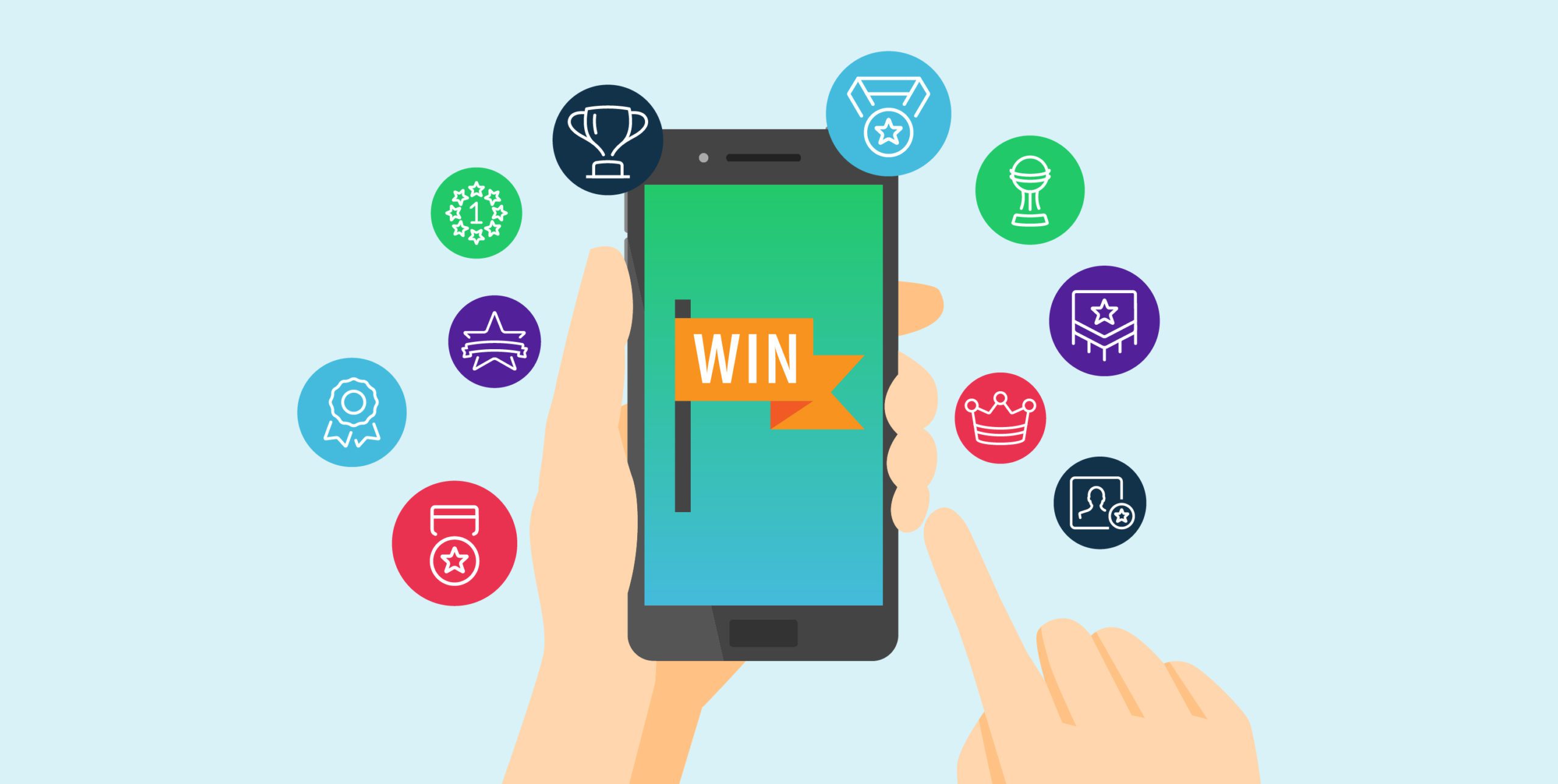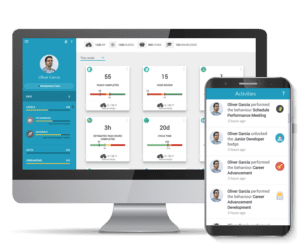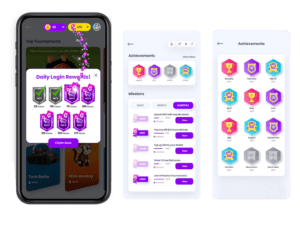Here’s an interesting stat: in 2019, 79% of employees claimed that gamification of activities resulted in increased motivation and purpose in their workplace. In addition, studies have shown that gamification increases customer interactions and employee productivity. Gamification is most apparent in mobile apps – since smart devices have emerged as our preferred choice of content consumption. Gamified marketing is another hot trend – a 2019 study by Forbes shows it boosts newly registered users by 600% monthly.
All this hoopla around gamification, however, may confuse organizations trying to join the bandwagon. So, in this article, we’ll discuss ways to gamify your app and how new gamification platforms can help achieve that faster.
What is Gamification?
Gamification is the process of improving systems, services, organizations, and businesses to create gaming-like experiences to motivate and engage users. Organizations utilize gamification as a tool to encourage application participation, develop programs, and even reward employees. Gamification in marketing focuses on bringing in more customers by gamifying a non-gaming context and incentivizing specific actions.
Many experts believe that gamification has more to do with the analysis of the human psyche rather than technology or methods. Some have even linked it to theories like Maslow’s Hierarchy of Needs: physiological, security or safety, love and belonging, esteem and self-actualization. As a result, more organizations are saying yes to gamify their regular apps or super apps to increase traffic and engagement.
Several key industries have adopted some form of gamification in their products, with key ones being Learning and Healthcare. Gamification in the education market is poised to grow to a staggering $1.8 Billion by 2023, at an annual growth rate of 23% between 2018-23. Badges, leaderboards, and points-and-scores systems continue to increase in popularity in many market segments, including the Corporate sector.
How to Gamify Your App:
There are some rules that every organization should follow while gamifying their apps. Gamification rules often are more psychologically attuned rather than relying on technological standards.
- Setting Clear Objectives:
As with marketing an app, gamification requires proper reasons and a well thought-out plan behind it. Organizations must not be swayed by the increasing trend of gamifying applications or non-gaming contexts. Instead, they should focus on clear objectives that gamification should aim to fix.
Gamification techniques can be used for benefits like community-building, user acquisition, engagement, and retention. In addition, it can be used as a morale-boosting mechanism in employees. Gamified marketing has often been behind some of the most viral social loops in recent years. Defining a clear objective of why you want to integrate gaming dynamics into your app is the defining factor between the success and failure of that effort.
- Adding Value:
Gamifying your app should provide its users with tangible values. For example, the sense of accomplishment plays a vital role in customer engagement and retention. This is crucial in organizational apps intended for employees. For example, 72% of employees believe that gamification in the workplace inspires them to work harder, according to a 2018 Medium survey.
- Ingraining with the Ecosystem:
Incentives that a gamified app provides must be in line with its core intention. Deciding on what type of rewards your gamified app should provide as users pass milestones should be ingrained in the app ecosystem. That way, users get a seamless experience that connects between their actions and their rewards.
- Keep it Simple and Entertaining:
Gamifying your app need not be a daunting task. Often, simpler gaming apps engage more users. The entertainment quotient increases the retention potential for an app. Mixing these two key aspects results in a winning formula for the app. This translates into gamified marketing campaigns as well. My Starbucks Rewards is a good example of this.
- Build Sharing Loops:
A key rule while gamifying your app is to incentivize customer gratification. In this day and age of social media, sharing one’s achievements is key to getting brownie points. Social media looping is a popular way that superapps like Uber use to generate hype for their array of products.
For example, Cred, the credit card payment app, has easy sharing user-earned badges on various social media platforms.
- Quick Rewards:
Almost all good gamified apps and marketing campaigns break down the prizes milestone-wise. A grand reward at the end of the complete experience is a surefire way to attract users. But smaller, gradually increasing incentives at the completion of smaller milestones while leveling up through the app creates more user engagement.
Smaller rewards like new badges, unlocking additional levels or content and app currency payouts drive curiosity among users. Microsoft’s learning platform, MS Learn, provides users with points upon finishing a topic. These in-app currencies can then be used to unlock paywalled content.
Conclusion – Platforms that Can Help:
Superapps from tech giants like Facebook, Amazon & Google have all but skyrocketed the hype around gamification of apps. The projected total market value is projected to be $12 Billion by the end of 2021, causing more organizations to come on-board. While opting to gamify your app, consider the goals carefully and integrate it closely with your ecosystem. Gamification platforms like Goama can simplify the migration procedure. Goama offers various features, like lightweight integration, customizable UI and advanced security features to name a few. With instant gratification among the key behavioral patterns of this decade, gamifying your app may be the level-up your organization needs to tap into that potential.
Don’t forget to check out our video below for more info on what happens when you gamify your app!






